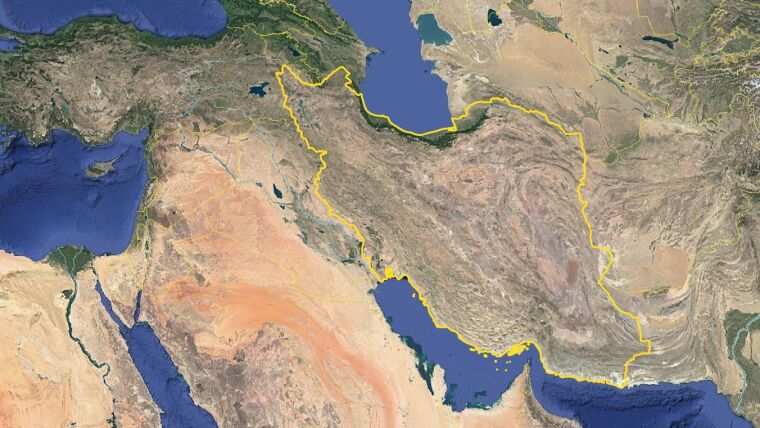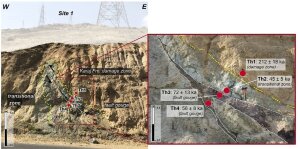
Published:
Dating results of the North Tehran Fault
Graphic: Maryam HeydariIran's capital Tehran, home to more than 15 million people, is situated on the foothills of a beautiful mountain range, but this adorable setting comes with a risk: The mountain range is bounded by the North Tehran Fault, a zone of active deformation and significant earthquake hazard. Relatively little is known about how active the fault is and when it hosted the last large earthquakes. This information is crucial for better understanding the hazard it poses. In a new paper, Maryam Heydari et al. used luminescence dating of the core of the fault zone, the fault gouge. The idea behind this method is that any large earthquake with metres of slip will have caused frictional heat. This heat resets crystal defects in quartz grains in the fault zone. After the heating, crystal defects again start to accumulate over time. By measuring the amount of crystal defects from the quartz grains, one can figure out for how long the rocks has not been heated—that is, the time since the last big earthquake. The authors found that the fault has slipped in the Late Pleistocene. These ages are much older than what has been found in other studies, but it is known that the method overestimates the elapsed time. Therefore, the study helps to better understand how the luminescence signal reacts on frictional heat and how mineral grains in the fault zone respond to mechanical wear and heating. Additionally, the study helps to better evaluate the North Tehran Fault's activity.
The paper, co-authored by Christoph Grützner has been published open access in the journal Quaternary Geochronology:
Heydari, M., Ghassemi, M. R., Grützner, C., Tsukamoto, S., Chruścińska, A., & Preusser, F. (2024). First luminescence dating of exhumed fault-zone rocks of the North Tehran Fault (Iran). Quaternary Geochronology 101562. https://doi.org/10.1016/j.quageo.2024.101562External link.
